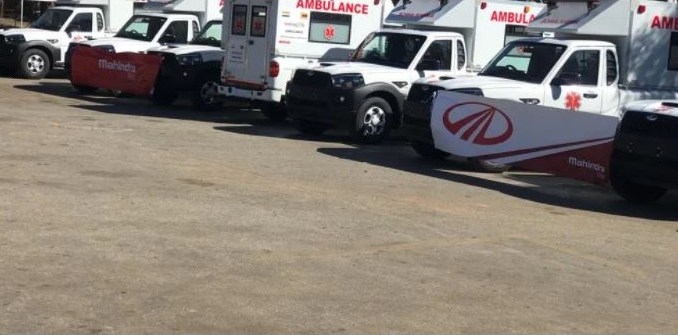
BY VANESSA GONYE
ZIMBABWE has received 20 vehicles and ancillary equipment from India and the World Health Organisation under an African Development Bank (AfDB) facility in a bid to boost its struggling health system.
India donated 10 ambulances, while the other 10 were donated by WHO, in partnership with the AfDB.
Speaking at the handover of the ambulances and other hospital consumables at Sally Mugabe Central Hospital (formerly Harare Central Hospital), Acting President Constantino Chiwenga said the intervention was timely as the country was dealing with the deadly COVID-19 pandemic.
He said the support would cover many areas in the health sector.
“The donated fleet of purpose-built and state-of-the-art ambulances that were developed by Mahindra befit our aspirations of expanding and modernising our healthcare system,” said Chiwenga, who doubles as Health minister.
“Gesture attests to the unwavering friendship between the peoples of the two nations (Zimbabwe and India), more so in this prevailing COVID-19 pandemic, which has to date claimed a huge toll of casualties across the globe.”
AfDB country manager Moono Mupotola said this was part of the bank’s three-year (2020-22) COVID-Response Project in Zimbabwe (CRP).
- Chamisa under fire over US$120K donation
- Mavhunga puts DeMbare into Chibuku quarterfinals
- Pension funds bet on Cabora Bassa oilfields
- Councils defy govt fire tender directive
Keep Reading
The US$10 million cost of the project was wholly financed by the ADF Transition Support Facility.
The project was approved in May 2020 and it is expected to close on December 31, 2022.
“The project aims to contribute to limiting the morbidity and mortality rates related to COVID-19 in Zimbabwe through the strengthening of the health system to effectively respond to the COVID-19 pandemic. The project area covers 15 high-density urban suburbs in Harare and Bulawayo, satellite townships and targeted health facilities across the country.”
“The bank’s support in the form of biomedical equipment, diagnostics and PPE [personal protective equipment] to Zimbabwe and other RMCs remains relevant more than one year since the onset of the COVID-19 pandemic on the continent,” she said.
To date, WHO has procured 80 intensive care unit hospital beds to support case management for COVID-19 in addition to the 10 ambulances, 51 ventilators and associated accessories, 12 000 coveralls, 320 000 pairs of gloves, 160 000 respirator masks (N95), 8 960 goggles and 381 litres of nucleic buffer handed over yesterday.
Some of the case management and diagnostic supplies were received earlier and these were handed over to government in February.
These include 120 oxygen concentrators, 12 000 face shields, 800 pairs of goggles, 6 000 gowns, 100 000 medical masks, 2 000 N95 masks, 15 000 pairs of latex examination gloves and 120 000 units of COVID-19 antigen test kits. The rest of the supplies will be procured with funds from the next tranche.
In addition to this support, Zimbabwe is also benefiting from the bank’s support to the Sadc COVID-19 response project approved on June 23, 2020 to the tune of US$7 million.
- Follow Vanessa on Twitter @vanessa_gonye











